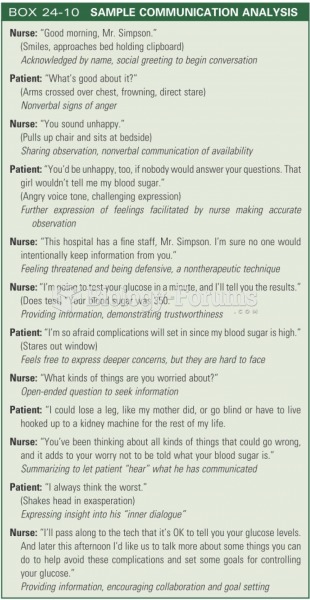Answer to Question 1
B
Answer to Question 2
Breathe deeply: Use deep breathing to ease your fight-or-flight symptoms. Inhale to a count of ten, hold this breath to a count of ten, and exhale to a count of ten. Concentrate on your counting and your breathing to reduce your stress.
Convert your fear: Don't view your sweaty palms and dry mouth as evidence of fear. Interpret them as symptoms of exuberance, excitement, and enthusiasm to share your ideas.
Know your topic and come prepared: Feel confident about your topic. Select a topic that you know well and that is relevant to your audience. Prepare thoroughly and practice extensively.
Use positive self-talk: Remind yourself that you know your topic and are prepared. Tell yourself that the audience is on your sidebecause it is Moreover, most speakers appear to be more confident than they feel. Make this apparent confidence work for you.
Take a sip of water: Drink some water to alleviate your dry mouth and constricted voice box, especially if you are talking for more than 15 minutes.
Shift the spotlight to your visuals: At least some of the time the audience will be focusing on your slides, transparencies, handouts, or whatever you have preparedand not totally on you.
Ignore any stumbles: Realize that it is okay to make an occasional mistake. Don't apologize or confess your nervousness. If you make a mistake, ignore the stumble and keep going. The audience will forget any mistakes quickly.
Feel proud when you finish: You'll be surprised at how good you feel when you finish. Take pride in what you've accomplished, and your audience will reward you with applause and congratulations. And, of course, your body will call off the fight-or-flight response and return to normal







